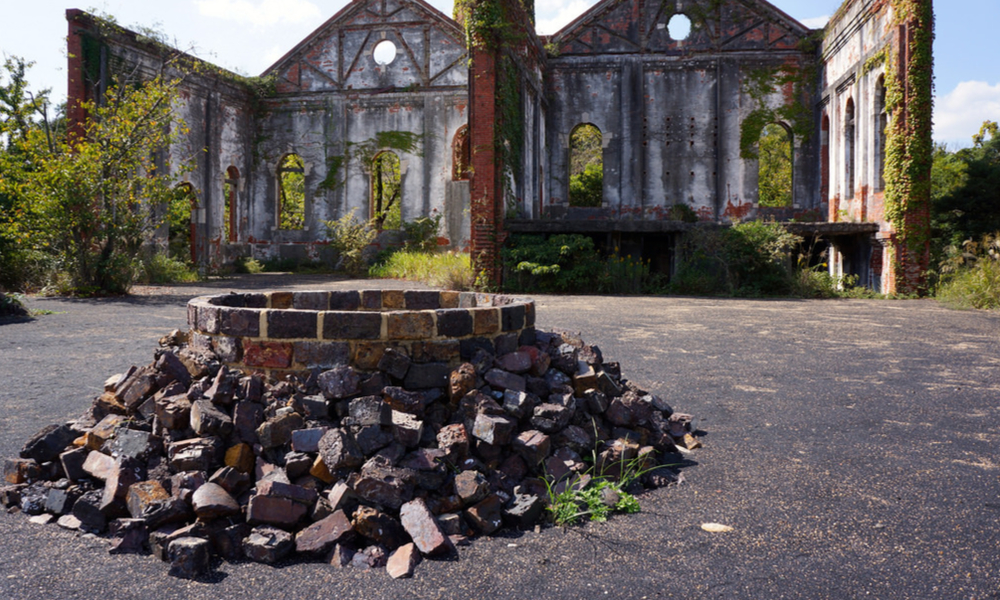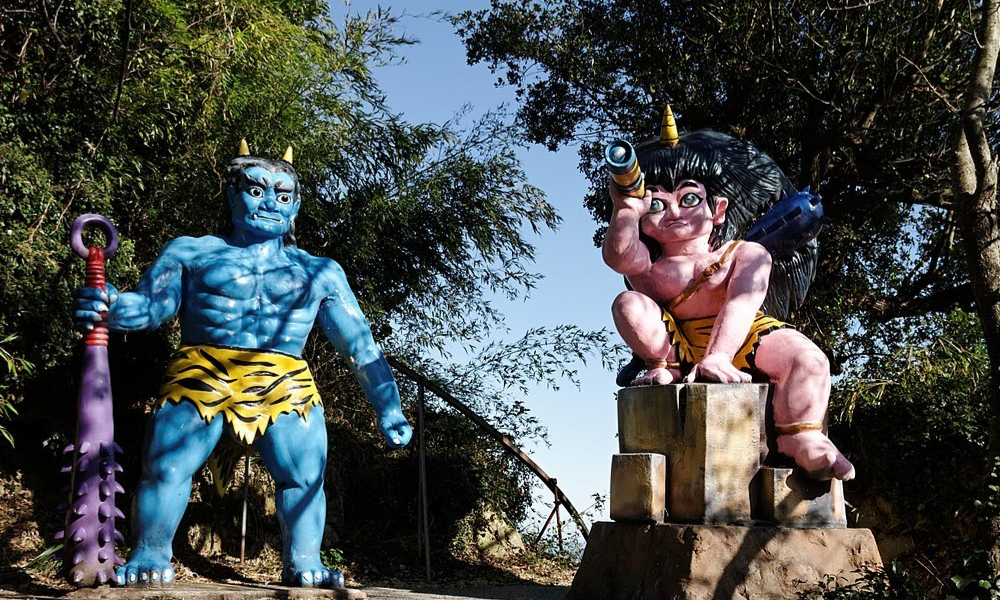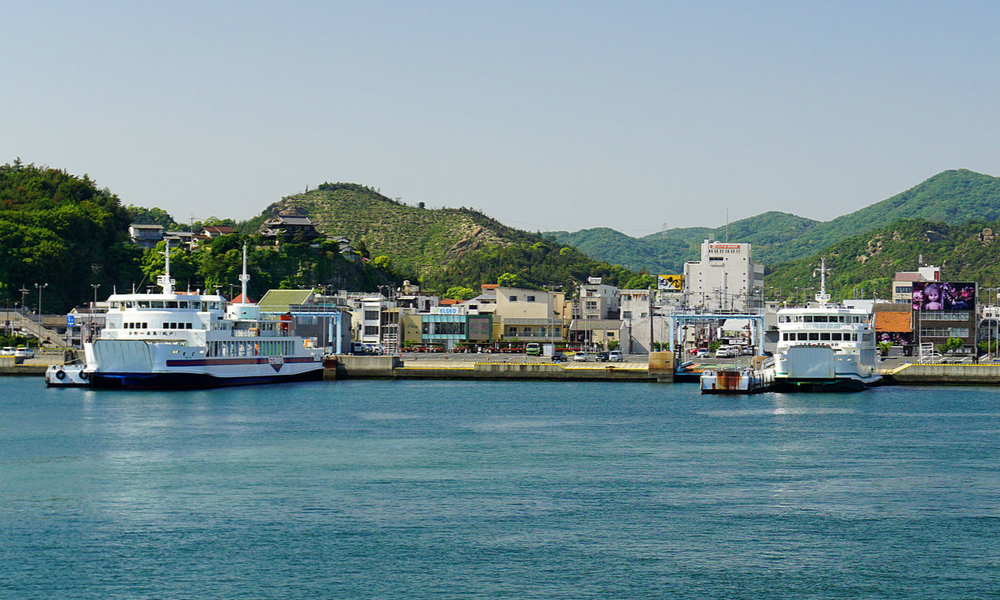
The Seven Deities of good fortune
pilgrimage in Asakusa
Half-Day
Asakusa is a symbol of Tokyo, where it is possible to enjoy a half day pilgrimage in the sacred places of the Seven Deities of good fortune. Visit temples and shrines hidden in the Asakusa district, collect the stamps and put it in your travel diary. You will bring back with you more than an unforgettable souvenir !
Click here to discover more excursions in Tokyo.
We are Japan specialist travel agency, click here to contact our experts for more information about your next trip.
- Travel to Japan with Peak Experience -
Overview
Asakusa is a symbol of Tokyo, where it is possible to enjoy a half day pilgrimage in the sacred places of the Seven Deities of good fortune. Visit temples and shrines hidden in the Asakusa district, collect the stamps and put it in your travel diary. You will bring back with you more than an unforgettable souvenir !
Click here to discover more excursions in Tokyo.
We are Japan specialist travel agency, click here to contact our experts for more information about your next trip.
- Travel to Japan with Peak Experience -
What is the pilgrimage of the Seven Deities of good fortune ?
The Seven deities of good fortune (Shichifukujin) are the gods of good fortune in the japanese mythology.
Ebisu : God of the fishermen, merchants and prosperity.
Daikokuten : God of richness, commerce, and exchange.
Bishamonten : God of the warriors, protector of buddhist laws and prosperity.
Benzaiten or Benten : Goddess of knowledge, of art and beauty, eloquence, music, literature, science, virtue, wisdom, prosperity and longevity.
Fukurokuju : God of happiness, richness and longevity, virility and wisdom.
Hotei : God of abundance, good health and commerce
Jurojin : God of longevity and prosperity.


The Seven Deities of good luck are often imagined in their Takarabune ship (=Treasures ship). During the Edo period, Japan developed its commercial assets and the temples and shrines dedicated to the Seven Deities of good fortune were highly visited. This practice became a true custom for who seeks for prosperity in his business, and also for the new year’s wishes. Nowadays, we pray the gods also for the good health, the wellness in the family, and more...
In each area of Japan, we can find temples and shrines dedicated to the Seven Deities of good fortune that are highly visited the first two weeks of the year. However, in Asakusa, we pray these gods throughout the year. Usually in Japan when we visit a temple, we can buy a stamp and put it into what is called a Goshuin-cho (shuin notebook). Regarding the Seven Deities of good fortune, the stamps are not always done on a Goshuin-cho but also on a illustrated paper called fukue or on a paper card called shikishi on which the names of the gods are written in Japanese calligraphy. Even we could have imagined that there were 7 sites in Asakusa, there are actually 9. Indeed, accoring to beliefs, 9 is a number that is believed to bring more luck than the number 7. Therefore, two temples have been added. After receiving the stamps, you will bring back also unforgettable souvenirs of an old district of Tokyo.
 Fukue
Fukue Shikishi
ShikishiItinerary ↓↓ Trip route ↓↓
Itinerary
Asakusa Station ー 9 temples and shrines of the Seven Deities of good luck Senso-ji temple (Daikokuten), Asakusa-jinja shrine (Ebisu), Matsuchiyama-shoden temple (Bisyamonten), Imado-jinja shrine (Fukurokuju), Hashiba-fudo-son temple (Hotei) , Ishihama shrine (Juro-jin) , Yoshiwara shrine (Benzaiten), Ootori shrine (Juro-jin), Yasaki-Inari shrine(Fukurokuju)】-Asakusa (Tour end)
※The itinerary could be changed depending on the road traffic, the weather, and the opening schedules.
★Appointment place : Tokyo Asakusa cruise pier- Sumida river / near Asakusa station
★Departure time: 9:00 am 1 pm (everyday)
※ In the case of a private tour, it is possible to pick you up at your hotel (extra payments)
★Duration : about 4 hours
★Distance of the trip: 7~8km
※The special notebook (Goshuincho), the paper card (Shikishi) and the decorated paper (Fukue) are sold in the first temple sanctuary of the trip (individual purchase). Each stamp is chargeable, and the price depend on the support you choose. Please refer to the information below :
Big paper card (Shikishi) : 300 yen. tamp on a Shikishi : 300 yen
Illustrated paper (fukue) : 500 yen Tamp on a Fukue : 200 yen
Asakusa
The tour begins at Asakusa station
Asakusa is a district where stands the old Senso-ji temple. During the Edo period, it was a merchant district which used to be isolated, while Tokyo was growing, as the district of Shibuya, and Shinjuku. Therefore, the district keeps an old atmosphere, and became well-known, and nowadays, a not to be missed place during a journey in Tokyo. Not far from the Sumida river, you will see the famous building of the beer blend Asahi, and the Tokyo Sky Tree tower. The Senso-ji temple is surrounded by merchant galleries and old streets. We can also see some “retro” streets where stand an old popular theatre and old sweets shops. The district includes also a mall, fast foods. Therefore, it is a true mix of the old and the modern Japan. In the vicinity, you could enjoy a cruise on the Sumida river, a visit of the Tokyo Sky Tree, or of the Kappabashi district known for its cooking utensils shops. There is also the Ryogoku district, called also the Sumo town where it is also recommended to visit the Edo museum and many other interest sites?


Visit the Seven Deities of good luck sites
When you begin the visit, you could buy a Fukue (illustrated paper for 500 yen) or the big card paper (300 yen) and buy stamp to put in (200 yen for the Fukue, 300 yen for the Shikishi). Your trip in the Seven Deities of good luck's sites begins ! (please notice that the payment of the fukue, shikishi and stamps isi on you own charge).
The order of the 9 sites visit is not necessary scheduled, but in any case, the duration of the trip is about 4 hours.
It includes :
1 Senso-ji temple (Daikokuten) : the most ancient temple and the symbol of Asakusa. The Kaminarimon gate (thunder gate) with its big lantern and two Fujin statues (god of the wind) and Raijin (god of thunder), the one floor gate Hozomon and the merchant district Nakamise where are many shops and things to discover.
 Senso-ji Shrine
Senso-ji Shrine Asakusa-jinja Shrine
Asakusa-jinja Shrine3. Matsuchiyama-shoden (Bisyamonten) : It is said that a dragon appeared on a hill and secured the land on this site. The hill is very small, about 10 meters high but there is still a monorail that travel to the top. It is the smaller monorail of Japan.
 Matsuchiyama-shoden temple
Matsuchiyama-shoden temple4. Imado-jinja shrine (Fukurokuju): Izanagi and Izanami are the deities of shinto and co-creator of Japan. This shrine is known to be prayed for weddings. It is also the birthplace of the famous manekineko (the cat of good fortune) that you will see everywhere in this place.
 Imado-jinja shrine
Imado-jinja shrine5. Hashiba-fudo-son temple (Hotei): It is a very old small temple full of history. It is said that the temple protected the district from the world war 2 bombing and also the earthquakes. This temple is very loved and venerated by locals.
 Hashiba-fudo-son temple
Hashiba-fudo-son temple6. Ishihama shrine (Jurojin): The northernmost Seven Deities of good luck's temple, is a shrine dedicated to Amaterasu-okami (the most important god among all the japanese gods). In the sanctuary, there is other shrines and torii (the gateway of a Shinto shrine). The architecture of the main building is very old and provides a fujizuka (kind of small mound made with volcano rocks figuring Mount Fuji.) It is considered as a spiritual energy source.
 Sanctuaire Ishihama
Sanctuaire Ishihama7. Yoshiwara shrine (Benzaiten) : Yoshiwara, located north of Asakusa district was formerly the pleasure district during the Edo period. At this time, the sanctuary was already built. Here, we can admire the Benzaiten temple, only goddess among the Seven.
 Yoshiwara Shrine
Yoshiwara Shrine Ootori Shrine
Ootori Shrine9. Yasaki-Inari shrine (Fukurokuju): It is a small shrine located near the cooking ustensiles shops district named "Kappabashi". It is venerated by locals and is in a perfect harmony with the old town's scenery. On the ceiling of the temple, you will see 100 drawings describing the history of equitation since the first emperor of Japan, Jinmu.
 Yasaki-Inari shrine
Yasaki-Inari shrineWe will go back to Asakusa station, then the tour will end.
Click here to discover other excursions from Tokyo.
We are a Japan-based travel agency based in Tokyo, click here to contact our experts for more information.
Where to Go
 Senso-ji Temple
Senso-ji Temple Sumida river view
Sumida river view Stamps on a Gosshuin
Stamps on a Gosshuin Imado shrine (Good fortune cat temple)
Imado shrine (Good fortune cat temple) The Seven Deities of Good Fortune
The Seven Deities of Good FortuneItinerary
What is the pilgrimage of the Seven Deities of good fortune ?
The Seven deities of good fortune (Shichifukujin) are the gods of good fortune in the japanese mythology.
Ebisu : God of the fishermen, merchants and prosperity.
Daikokuten : God of richness, commerce, and exchange.
Bishamonten : God of the warriors, protector of buddhist laws and prosperity.
Benzaiten or Benten : Goddess of knowledge, of art and beauty, eloquence, music, literature, science, virtue, wisdom, prosperity and longevity.
Fukurokuju : God of happiness, richness and longevity, virility and wisdom.
Hotei : God of abundance, good health and commerce
Jurojin : God of longevity and prosperity.


The Seven Deities of good luck are often imagined in their Takarabune ship (=Treasures ship). During the Edo period, Japan developed its commercial assets and the temples and shrines dedicated to the Seven Deities of good fortune were highly visited. This practice became a true custom for who seeks for prosperity in his business, and also for the new year’s wishes. Nowadays, we pray the gods also for the good health, the wellness in the family, and more...
In each area of Japan, we can find temples and shrines dedicated to the Seven Deities of good fortune that are highly visited the first two weeks of the year. However, in Asakusa, we pray these gods throughout the year. Usually in Japan when we visit a temple, we can buy a stamp and put it into what is called a Goshuin-cho (shuin notebook). Regarding the Seven Deities of good fortune, the stamps are not always done on a Goshuin-cho but also on a illustrated paper called fukue or on a paper card called shikishi on which the names of the gods are written in Japanese calligraphy. Even we could have imagined that there were 7 sites in Asakusa, there are actually 9. Indeed, accoring to beliefs, 9 is a number that is believed to bring more luck than the number 7. Therefore, two temples have been added. After receiving the stamps, you will bring back also unforgettable souvenirs of an old district of Tokyo.
 Fukue
Fukue Shikishi
ShikishiItinerary ↓↓ Trip route ↓↓
Itinerary
Asakusa Station ー 9 temples and shrines of the Seven Deities of good luck Senso-ji temple (Daikokuten), Asakusa-jinja shrine (Ebisu), Matsuchiyama-shoden temple (Bisyamonten), Imado-jinja shrine (Fukurokuju), Hashiba-fudo-son temple (Hotei) , Ishihama shrine (Juro-jin) , Yoshiwara shrine (Benzaiten), Ootori shrine (Juro-jin), Yasaki-Inari shrine(Fukurokuju)】-Asakusa (Tour end)
※The itinerary could be changed depending on the road traffic, the weather, and the opening schedules.
★Appointment place : Tokyo Asakusa cruise pier- Sumida river / near Asakusa station
★Departure time: 9:00 am 1 pm (everyday)
※ In the case of a private tour, it is possible to pick you up at your hotel (extra payments)
★Duration : about 4 hours
★Distance of the trip: 7~8km
※The special notebook (Goshuincho), the paper card (Shikishi) and the decorated paper (Fukue) are sold in the first temple sanctuary of the trip (individual purchase). Each stamp is chargeable, and the price depend on the support you choose. Please refer to the information below :
Big paper card (Shikishi) : 300 yen. tamp on a Shikishi : 300 yen
Illustrated paper (fukue) : 500 yen Tamp on a Fukue : 200 yen
Asakusa
The tour begins at Asakusa station
Asakusa is a district where stands the old Senso-ji temple. During the Edo period, it was a merchant district which used to be isolated, while Tokyo was growing, as the district of Shibuya, and Shinjuku. Therefore, the district keeps an old atmosphere, and became well-known, and nowadays, a not to be missed place during a journey in Tokyo. Not far from the Sumida river, you will see the famous building of the beer blend Asahi, and the Tokyo Sky Tree tower. The Senso-ji temple is surrounded by merchant galleries and old streets. We can also see some “retro” streets where stand an old popular theatre and old sweets shops. The district includes also a mall, fast foods. Therefore, it is a true mix of the old and the modern Japan. In the vicinity, you could enjoy a cruise on the Sumida river, a visit of the Tokyo Sky Tree, or of the Kappabashi district known for its cooking utensils shops. There is also the Ryogoku district, called also the Sumo town where it is also recommended to visit the Edo museum and many other interest sites?


Visit the Seven Deities of good luck sites
When you begin the visit, you could buy a Fukue (illustrated paper for 500 yen) or the big card paper (300 yen) and buy stamp to put in (200 yen for the Fukue, 300 yen for the Shikishi). Your trip in the Seven Deities of good luck's sites begins ! (please notice that the payment of the fukue, shikishi and stamps isi on you own charge).
The order of the 9 sites visit is not necessary scheduled, but in any case, the duration of the trip is about 4 hours.
It includes :
1 Senso-ji temple (Daikokuten) : the most ancient temple and the symbol of Asakusa. The Kaminarimon gate (thunder gate) with its big lantern and two Fujin statues (god of the wind) and Raijin (god of thunder), the one floor gate Hozomon and the merchant district Nakamise where are many shops and things to discover.
 Senso-ji Shrine
Senso-ji Shrine Asakusa-jinja Shrine
Asakusa-jinja Shrine3. Matsuchiyama-shoden (Bisyamonten) : It is said that a dragon appeared on a hill and secured the land on this site. The hill is very small, about 10 meters high but there is still a monorail that travel to the top. It is the smaller monorail of Japan.
 Matsuchiyama-shoden temple
Matsuchiyama-shoden temple4. Imado-jinja shrine (Fukurokuju): Izanagi and Izanami are the deities of shinto and co-creator of Japan. This shrine is known to be prayed for weddings. It is also the birthplace of the famous manekineko (the cat of good fortune) that you will see everywhere in this place.
 Imado-jinja shrine
Imado-jinja shrine5. Hashiba-fudo-son temple (Hotei): It is a very old small temple full of history. It is said that the temple protected the district from the world war 2 bombing and also the earthquakes. This temple is very loved and venerated by locals.
 Hashiba-fudo-son temple
Hashiba-fudo-son temple6. Ishihama shrine (Jurojin): The northernmost Seven Deities of good luck's temple, is a shrine dedicated to Amaterasu-okami (the most important god among all the japanese gods). In the sanctuary, there is other shrines and torii (the gateway of a Shinto shrine). The architecture of the main building is very old and provides a fujizuka (kind of small mound made with volcano rocks figuring Mount Fuji.) It is considered as a spiritual energy source.
 Sanctuaire Ishihama
Sanctuaire Ishihama7. Yoshiwara shrine (Benzaiten) : Yoshiwara, located north of Asakusa district was formerly the pleasure district during the Edo period. At this time, the sanctuary was already built. Here, we can admire the Benzaiten temple, only goddess among the Seven.
 Yoshiwara Shrine
Yoshiwara Shrine Ootori Shrine
Ootori Shrine9. Yasaki-Inari shrine (Fukurokuju): It is a small shrine located near the cooking ustensiles shops district named "Kappabashi". It is venerated by locals and is in a perfect harmony with the old town's scenery. On the ceiling of the temple, you will see 100 drawings describing the history of equitation since the first emperor of Japan, Jinmu.
 Yasaki-Inari shrine
Yasaki-Inari shrineWe will go back to Asakusa station, then the tour will end.
Click here to discover other excursions from Tokyo.
We are a Japan-based travel agency based in Tokyo, click here to contact our experts for more information.
| Important to know |
|
| Additional informations |
|
| Included |
|
| Not included |
|


 Seto Inland Sea
Seto Inland Sea East area
East area Naoshima
Naoshima Shodoshima
Shodoshima Teshima
Teshima Inujima
Inujima Megijima
Megijima Ogijima
Ogijima Honjima
Honjima Awashima
Awashima Takamishima
Takamishima Shishijima
Shishijima Ushimado
Ushimado Manabeshima
Manabeshima Takamatsu
Takamatsu Ieshima
Ieshima Kobe
Kobe Uno
Uno West area
West area Miyajima
Miyajima Hiroshima
Hiroshima Around Shimanami Kaido
Around Shimanami Kaido Onomichi
Onomichi Okunojima
Okunojima Omishima
Omishima Osakishimojima
Osakishimojima Ikuchijima
Ikuchijima Bareboat Charter
Bareboat Charter Crewed Charter
Crewed Charter Sailing Boat
Sailing Boat Cabin charter
Cabin charter  Yacht charter
Yacht charter Motor Boat
Motor Boat Our Fleet
Our Fleet Suggested Cruises
Suggested Cruises Kitchenware paradise : Kappabashi street
Kitchenware paradise : Kappabashi street ¥299,000〜
¥299,000〜